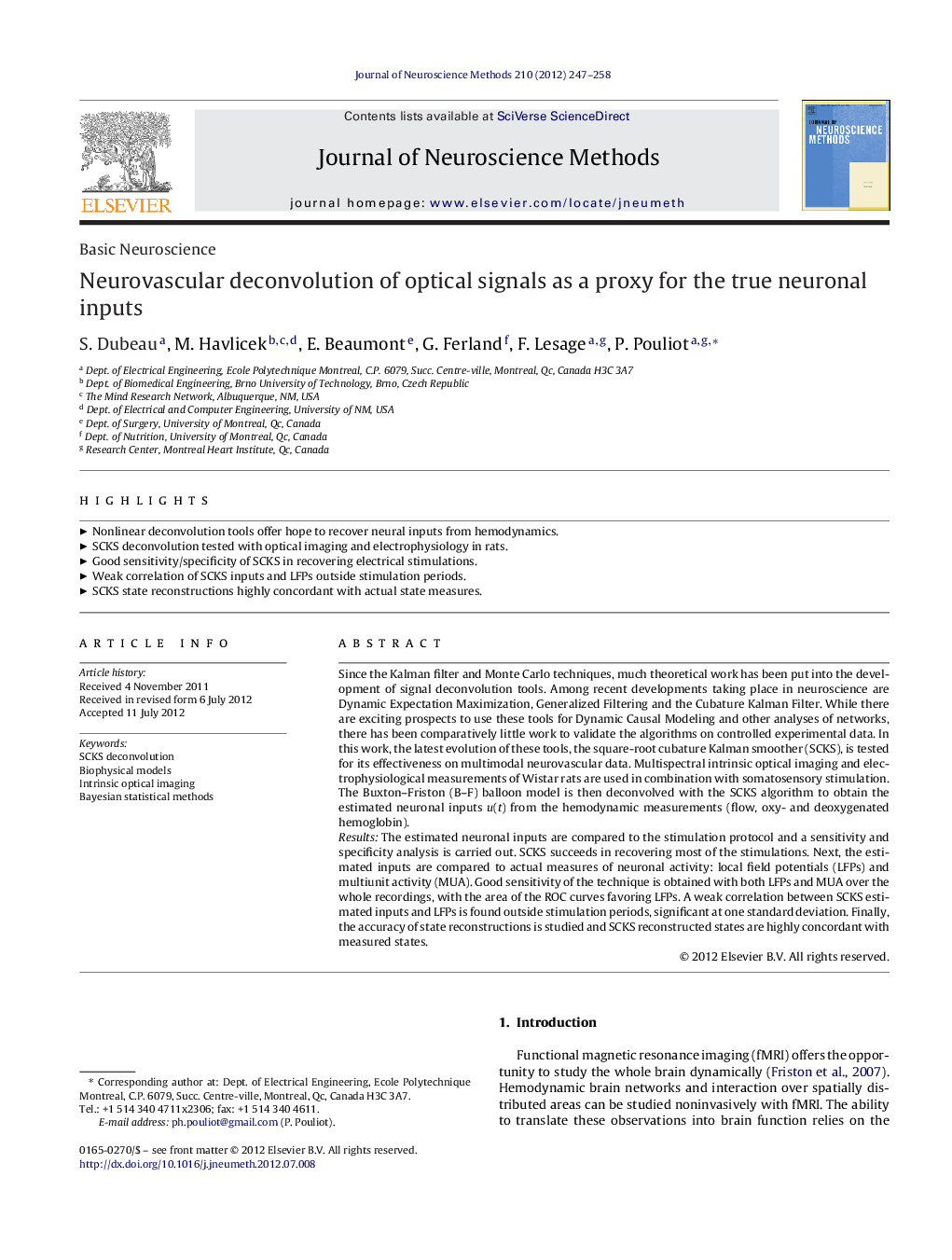| Article ID | Journal | Published Year | Pages | File Type |
|---|---|---|---|---|
| 6269576 | Journal of Neuroscience Methods | 2012 | 12 Pages |
Since the Kalman filter and Monte Carlo techniques, much theoretical work has been put into the development of signal deconvolution tools. Among recent developments taking place in neuroscience are Dynamic Expectation Maximization, Generalized Filtering and the Cubature Kalman Filter. While there are exciting prospects to use these tools for Dynamic Causal Modeling and other analyses of networks, there has been comparatively little work to validate the algorithms on controlled experimental data. In this work, the latest evolution of these tools, the square-root cubature Kalman smoother (SCKS), is tested for its effectiveness on multimodal neurovascular data. Multispectral intrinsic optical imaging and electrophysiological measurements of Wistar rats are used in combination with somatosensory stimulation. The Buxton-Friston (B-F) balloon model is then deconvolved with the SCKS algorithm to obtain the estimated neuronal inputs u(t) from the hemodynamic measurements (flow, oxy- and deoxygenated hemoglobin).ResultsThe estimated neuronal inputs are compared to the stimulation protocol and a sensitivity and specificity analysis is carried out. SCKS succeeds in recovering most of the stimulations. Next, the estimated inputs are compared to actual measures of neuronal activity: local field potentials (LFPs) and multiunit activity (MUA). Good sensitivity of the technique is obtained with both LFPs and MUA over the whole recordings, with the area of the ROC curves favoring LFPs. A weak correlation between SCKS estimated inputs and LFPs is found outside stimulation periods, significant at one standard deviation. Finally, the accuracy of state reconstructions is studied and SCKS reconstructed states are highly concordant with measured states.
⺠Nonlinear deconvolution tools offer hope to recover neural inputs from hemodynamics. ⺠SCKS deconvolution tested with optical imaging and electrophysiology in rats. ⺠Good sensitivity/specificity of SCKS in recovering electrical stimulations. ⺠Weak correlation of SCKS inputs and LFPs outside stimulation periods. ⺠SCKS state reconstructions highly concordant with actual state measures.
